School Syllabus
Water pollution
- Water Pollution occurs when harmful substances contaminate a water body and degrading the water quality and rendering it toxic to humans or the environment.
- Water is vulnerable to pollution since water is able to dissolve more substances than any other liquid on earth (known as a “universal solvent”), act as a transport media, have different usage, easy to grow microorganisms and less ability to self purify.
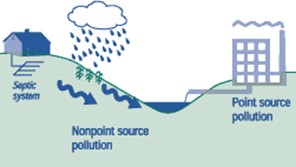
Types of wastewater
Agricultural
Industrial
Municipal
Radioactive
Oil contaminated
Fertilizer Runoff- Nutrient pollution (nitrates/phosphates), Industries/ domestic / municipal-solid wastes
Contaminants—from pesticides and fertilizers to waste leached from landfills and septic systems
Contaminants are carried from farms, factories, and cities by streams and rivers into our bays and estuaries; from there they travel out to sea.
| Nonpoint source pollution | Point source pollution |
|---|---|
| Pollution that occurs from a single identifiable source | Pollution that occurs via many diffuse sources |
| Discharge of effluents occurs at one point | Caused by the discharge of effluents over a wide area |
| Effect is high | Effect is low |
| A treatment plant can be installed in the area of discharge | A treatment plant is less effective |
| Ex: faulty treatment plants, oil tank spills, combined sewer outfalls, etc. | Ex: farming fertilizers, road salt runoff, etc. |
Major types of wastewater
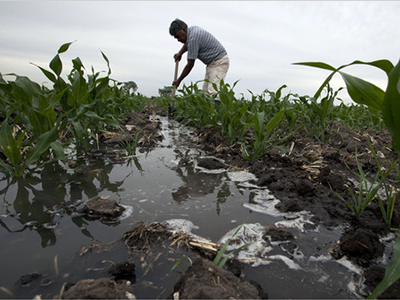
Agricultural wastewater
Agricultural pollution is the leading water pollution cause worldwide. It is the top source contaminating surface water bodies as well as groundwater. Nutrient pollution can result from heavy use of agrochemicals and also from animal husbandry which leads eutrophication.
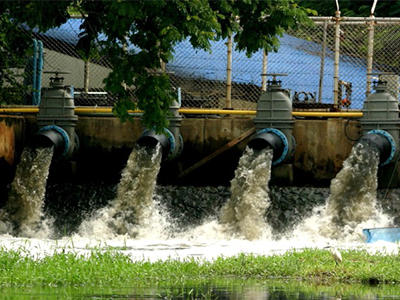
Industrial wastewater
Industrial waste is defined as waste generated by manufacturing or industrial processes. Industries mainly releasing oxygen demanding substances which deplete oxygen in water, create bad odour and threat to aquatic fauna. These substances may be chemical, solid or toxic wastes.
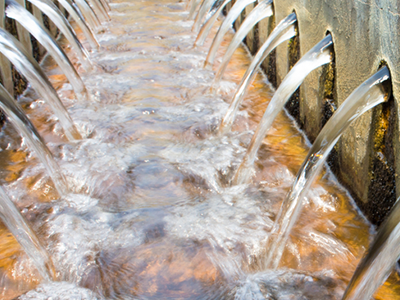
Municipal wastewater
A mixture of domestic waste water which flows back to the environment without being treated. This type represent both greywater (water flows from bathrooms, laundry and kitchen) and black water (water from toilets). Other than the chemicals this water may content pathogens and toxic compounds.
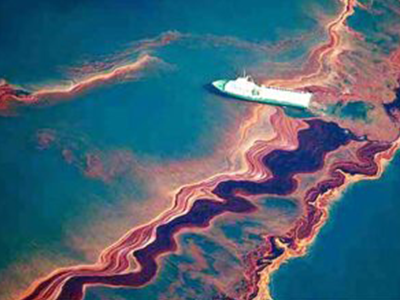
Oil pollution and radiactive substances
An oil spill is the release especially to the marine ecosystem, due to human activity, and is a form of pollution. Radioactive contamination, also called radiological contamination is the presence of radioactive substances, where their presence is unintended or undesirable.
| Pollutants/Source | Industry | Human settlements | Agriculture | Others |
|---|---|---|---|---|
| Organic pollutants | + | + | ||
| Nutrients (nitrate, phosphate) Heavy metals |
+ |
+ (+) |
+ | animal husbandry mining, military activities |
| Microbes | + | animal husbandry | ||
| Toxic organic compounds (chemicals, pesticides, POPs) |
+ | (+) | + | |
| Pharmaceuticals and trace chemicals |
+ | |||
| Suspended particles | + | +| + |
land use change |
|
| Nuclear waste | + |
What is water pollution?

What is Water Pollution?

Water Pollution | Water Contamination

Water Pollution

Environmental Pollution

Water Pollution

What is Water Pollution? | What Causes Water Pollution?
- Water pollution is measured by analysing water samples.
- Physical, chemical andbiological tests canbe conducted.
- Control of water pollution requires appropriate infrastructure and management plans. The infrastructure may include wastewater treatment plants.
- Sewage treatmentplants andindustrial wastewater treatmentplants areusuallyrequiredto protect water bodies from untreated wastewater.
- Agricultural wastewater treatment for farms, and erosion control at construction sites can also help prevent water pollution.
- Nature-basedsolutions are another approachtoprevent waterpollution.
- Effective control of urban runoff includes reducing speed and quantity of flow. In the United States, best management practices for water pollution include approaches to reduce the quantity of water and improve water quality